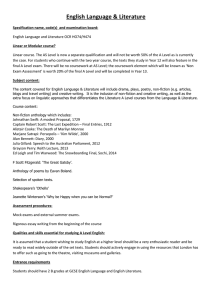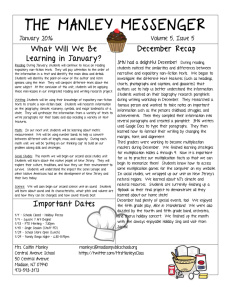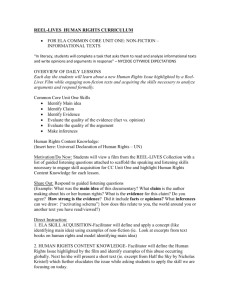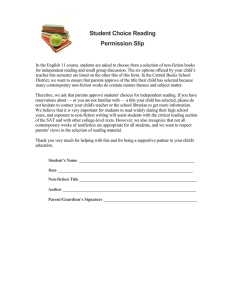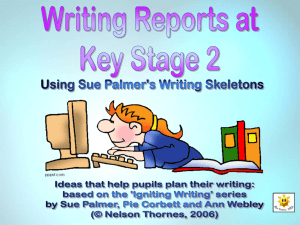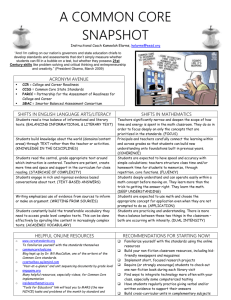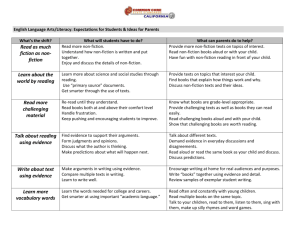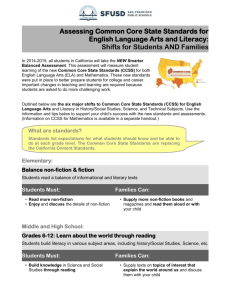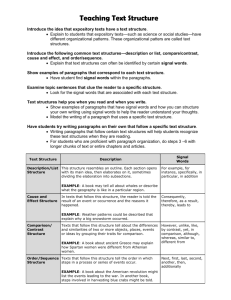Engaging Students – Non-Fiction Texts
advertisement
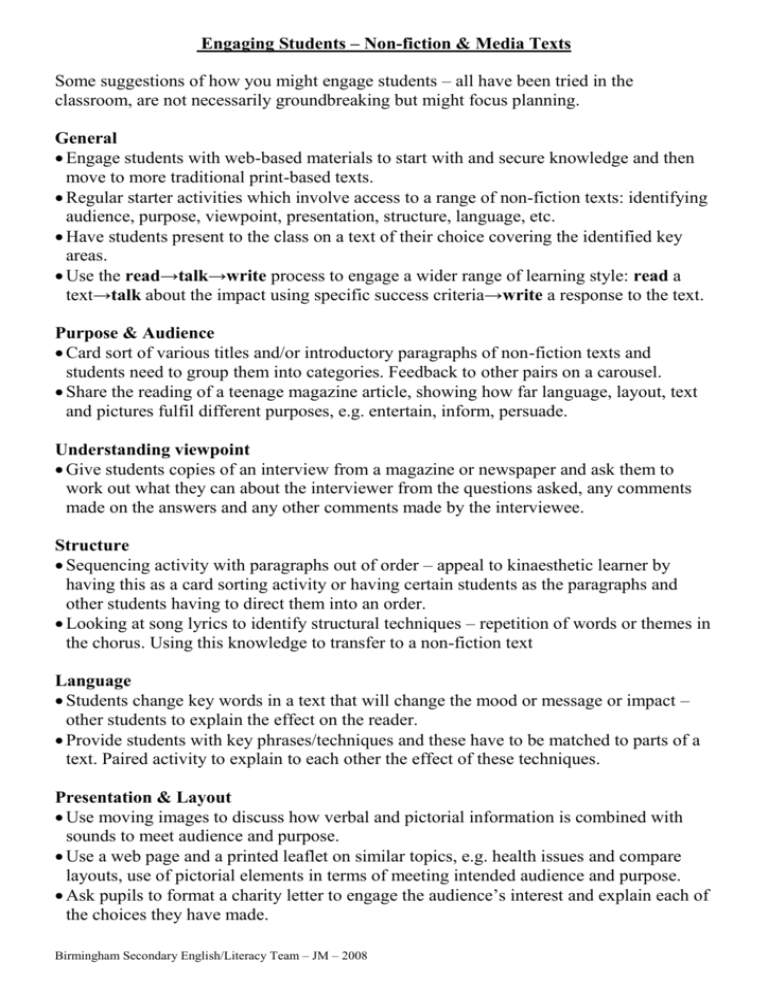
Engaging Students – Non-fiction & Media Texts Some suggestions of how you might engage students – all have been tried in the classroom, are not necessarily groundbreaking but might focus planning. General Engage students with web-based materials to start with and secure knowledge and then move to more traditional print-based texts. Regular starter activities which involve access to a range of non-fiction texts: identifying audience, purpose, viewpoint, presentation, structure, language, etc. Have students present to the class on a text of their choice covering the identified key areas. Use the read→talk→write process to engage a wider range of learning style: read a text→talk about the impact using specific success criteria→write a response to the text. Purpose & Audience Card sort of various titles and/or introductory paragraphs of non-fiction texts and students need to group them into categories. Feedback to other pairs on a carousel. Share the reading of a teenage magazine article, showing how far language, layout, text and pictures fulfil different purposes, e.g. entertain, inform, persuade. Understanding viewpoint Give students copies of an interview from a magazine or newspaper and ask them to work out what they can about the interviewer from the questions asked, any comments made on the answers and any other comments made by the interviewee. Structure Sequencing activity with paragraphs out of order – appeal to kinaesthetic learner by having this as a card sorting activity or having certain students as the paragraphs and other students having to direct them into an order. Looking at song lyrics to identify structural techniques – repetition of words or themes in the chorus. Using this knowledge to transfer to a non-fiction text Language Students change key words in a text that will change the mood or message or impact – other students to explain the effect on the reader. Provide students with key phrases/techniques and these have to be matched to parts of a text. Paired activity to explain to each other the effect of these techniques. Presentation & Layout Use moving images to discuss how verbal and pictorial information is combined with sounds to meet audience and purpose. Use a web page and a printed leaflet on similar topics, e.g. health issues and compare layouts, use of pictorial elements in terms of meeting intended audience and purpose. Ask pupils to format a charity letter to engage the audience’s interest and explain each of the choices they have made. Birmingham Secondary English/Literacy Team – JM – 2008
